One of the smartest things I did to level up my fitness and build more muscle on Tonal was to use eccentric mode. I love to experiment and I’ve discovered 9 cool ways to add eccentric mode to my workouts to make them more challenging. Keep reading to see what they are.
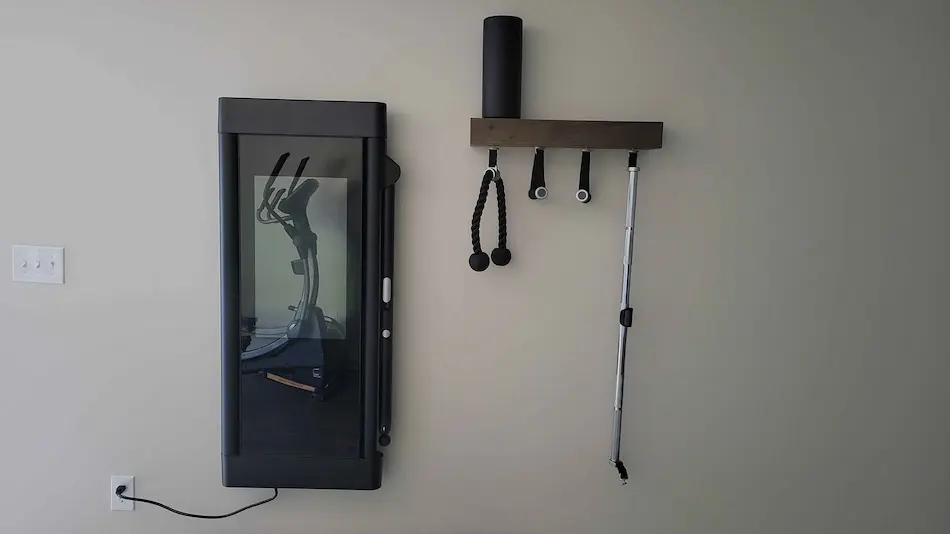
What is Tonal eccentric mode?
Although I was using Tonal dynamic modes from the very first workout, only now I have started to experiment with custom workouts.
If you are new to Tonal, the eccentric mode is a dynamic weight mode that automatically adds more resistance to the negative phase of the movement.
It uses patented technology and AI algorithms to automatically add more weight during the lowering part of the lift.
(According to the Tonal user manual, the eccentric mode allows adding up to 60% of the weight during the eccentric phase.)
This helps to increase mechanical tension on the muscle and maximize the effect of resistance training.
Integration of this training method in most of the workouts not only helps to improve strength but also leads to muscle hypertrophy, according to Tonal.
How does it work?
The Tonal eccentric mode is based on eccentric training principles (also called negative training) that have been first introduced by Erling Asmussen in the 1950s.
It adds the resistance (up to 60% more than your baseline) for every repetition during the lowering phase while keeping the resistance during the lifting phase without any changes.
Here’s a graph that can help you illustrate the eccentric mode on Tonal.
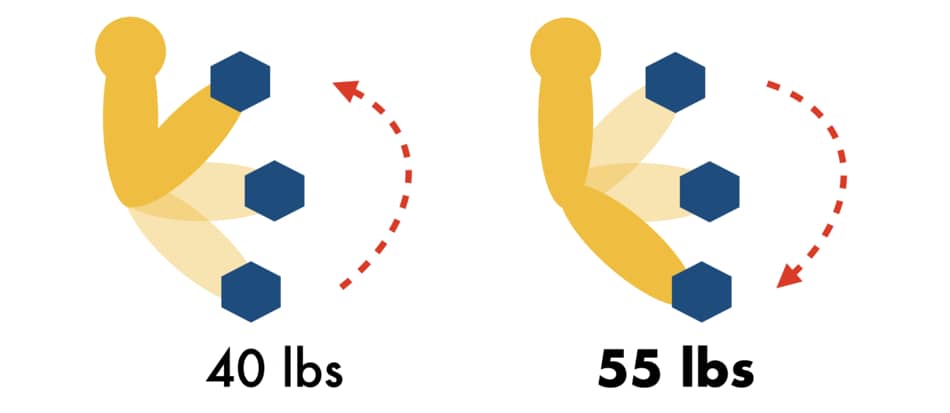
The picture on the left is the lifting or concentric phase. The picture on the right is when you lowering weight (eccentric phase).
Why I’m crazy about Tonal eccentric mode?
I spend years lifting weights in the gym and used eccentric training a lot, but I could only do it if I trained with my training partner. (On my own I didn’t bother.)
Now I use it for every rep!
Tonal understands when I’m at the beginning, middle, or end of my rep. It uses accelerometers in the handles and measures power output via sensors to “know” when I finish lifting.
Then, it takes up the data, feeds it back into the computer and the digital resistance automatically switches 40lbs weight into 55lbs.
It’s kind of like asking your 40lbs barbell to become a 55lbs barbell (in the middle of the rep).
(It’s mind-blowing, isn’t it?)
Benefits of eccentric training according to research
According to the article published in Sports Medicine Journal, “eccentric training creates muscle contraction while it is lengthening under load.”
“These contractions play an important role in everyday movements, as well as mobility, coordination, and force production in the muscle,” states the journal.
According to a meta-analysis published in the British Journal of Sports Medicine, “heavy eccentric calf training is superior to natural history, traditional physiotherapy, sham interventions and other exercise interventions for improvements in pain and function in mid-portion Achilles tendinopathy.”
One study published by Dr. Håkan Alfredson in The American Journal of Sports Medicine has shown that “15 out of 15 recreational athletes were back at their preinjury levels with full running activity after a 12-week eccentric training that’s been treated for chronic Achilles tendinosis.”
According to an article review published in the British Journal of Sports Medicine in 2009, “eccentric training was superior to concentric training in terms of increased muscle strength and mass, as well as increased muscle cross-sectional area measured with magnetic resonance imaging (MRI).”
How to use the Tonal eccentric mode?
Although I use some of the Tonal on-demand workouts and programs, most days when I do eccentric mode is during the Free Lift mode (custom workouts).
Here are 9 ways to use the Tonal eccentric mode.
1. Use one or two exercises
When I do my Tonal full-body workout with 5-6 movements like squats, bench, or deadlifts, I never do eccentric mode for all of the exercises. (I only choose 1-2 per workout.)
Start from the exercise where you want to prioritize. (Think about a movement where your strength has plateaued.)
For instance, if your goal is to get bigger glutes, add eccentric mainly for glutes.
2. Don’t use it all the time
Based on my periodization, my month is usually divided into 4 different stages (every stage is one week long):
- Endurance
- Strength
- Hypertrophy
- Active recovery (deload)
For each of the four stages, I use different training loads, sets, and reps. Strength and hypertrophy are where I add more resistance. Endurance is in the middle (with high reps but lightweight).
Active recovery is when I take it easy. I only use eccentric mode intermittently for a couple of weeks (during strength and hypertrophy only). I do not use it for endurance and active recovery.
3. Apply progressive overload
Gradually make it more challenging, month by month (don’t make it harder day by day). If you add 10 lbs more for your eccentric mode for the barbell bench press in month 1, try to make it harder not sooner than in month 2.
I normally aim to increase my load by 2.5 to 5% month by month. (Obviously, sometimes things get in the way so I take more time for progress.)
4. Combine with other dynamic modes
I love to combine the Tonal eccentric mode with other dynamic modes like burnout mode or spotter. Although I would not recommend this for beginners becasue this is a more advanced technique.
5. Use a slower tempo
I often use the Tonal eccentric mode together with slowing down on my lowering phase time to increase the time under tension.
This means Tonal not only adds more resistance for my negative phase but I also purposefully make the lowering part slower. (Yes, it burns like hell.)
Here’s the photo that illustrates how does the eccentric with a slower tempo look like.
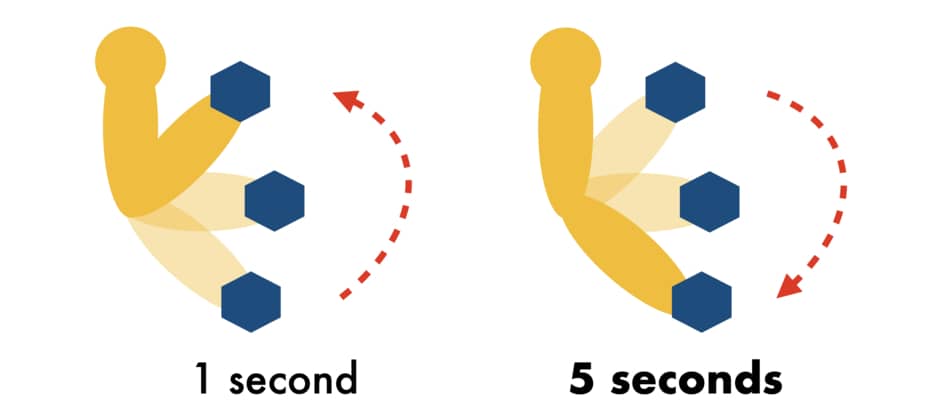
From this example, 1 second going up on the lifting phase followed by 5 seconds going down (slower tempo) on the lowering phase.
6. Use bilateral position change
I often play around with eccentric mode during my leg workouts where I use both limbs (bilaterally) for the concentric phase (e.g. going up with a squat).
Then, immediately I move one of the legs back and change position into the lunge. I stay in a lunge position during the eccentric phase.
Now I not only load more weight but also changed the movement into unilateral.
7. Make it harder with eccentric isometrics
I use this only for specific exercises (e.g., biceps burl).
Eccentric Isometrics allow you to train your muscles with a slow negative (going down) followed by an isometric hold (isometric contraction).
(This is when I pause at the bottom and squeeze the muscle.)
Then, I finish off in the fast concentric phase (often unloaded.)
If the holding isometric contraction at the bottom is too difficult, skip this part and try doing only the negative phase of the lift.
(See below.)
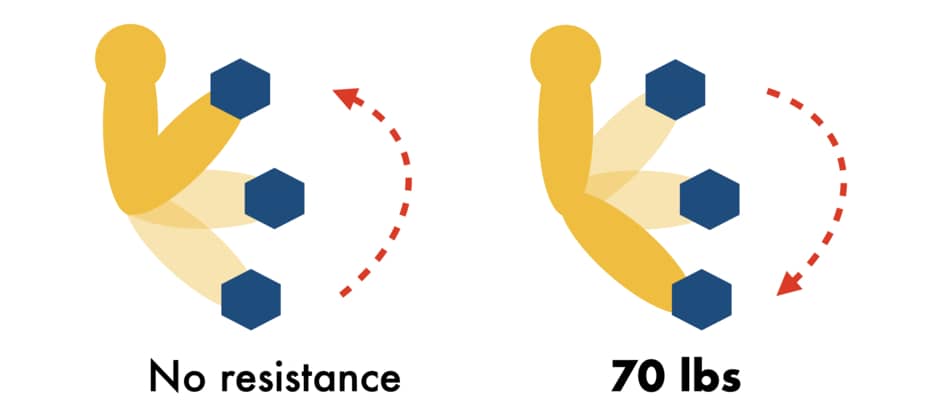
Here I have the lowering phase loaded with 70 lbs, whereas in the concentric phase I use zero resistance (this one is more advanced).
8. Swap the handles
Here is easy.
I use eccentric mode in a way that I do lift using the pronated grip and I lower the weight with a supinated grip.
For example, doing a seated pull-down in the concentric phase (lowering the smart handles towards your chest), then you supinate your wrists and perform chin up on the way back.
9. Try advanced on-demand programs
Some of the Tonal advanced workout programs already include an eccentric mode for all of the exercises within one session. (Yeah, it’s tough like hell.)
Although I prefer to cherry-pick my exercises for eccentric mode, if you’re looking for a one-time experiment and ass-kicking experience, try some of the advanced programs.
When I use the Tonal eccentric mode?
For me, the best time to use the Tonal eccentric mode is when I’m been stuck with my progress (or when I’m at the beginning of my training cycle.)
For compound lifts, I use eccentric mode at the beginning of my workout.
For isolation and accessory exercises, I use eccentric mode at the end of the workout.
When I don’t use Tonal eccentric mode?
I don’t use the Tonal eccentric mode on the days when I feel tired and fatigued.
Although I love to push myself, I am happy to skip this mode on the days when I feel tired.
(My wife complains I spend more energy in the gym than on her.)
Here’s my recent picture after training on Tonal.
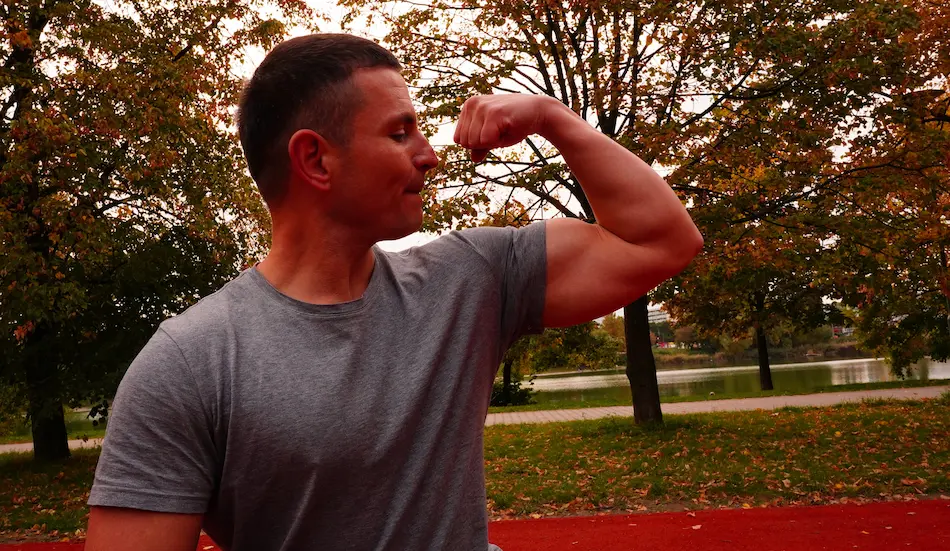
I would also skip this mode if my goal was to build strength, without building muscle.
According to the review article published in The Journal of Strength and Conditioning Research, “eccentric muscle actions have a greater effect on muscle size and hypertrophy, compared with concentric actions.”
If your goal is to build strength (without adding extra muscle size) I would skip eccentric mode.
Tonal Eccentric vs Smart Flex
Apart from eccentric mode, Tonal has also a number of other cool features that helps you optimize your workout.
The difference between the Tonal eccentric mode and smart flex is that the eccentric mode adds more resistance to the negative part of the movement, without changing the concentric resistance.
On the other hand, the Tonal Smart Flex mode is the feature that measures your power output from every repetition and adjusts the resistance (either add more or reduce) based on your current performance.
I like to use smart flex mode because when it detects that I can handle more weight, it will add more resistance for both eccentric and concentric evenly.
Conclusion
The Tonal eccentric mode is a great tool to build muscle and strength because it allows you to add resistance to the negative part of a movement.
Adding more weight increases force production and induces more mechanical tension in the muscle.
I love to use this mode in combination with other smart features like burnout mode or chains, as well as other variations that I’ve mentioned above.
